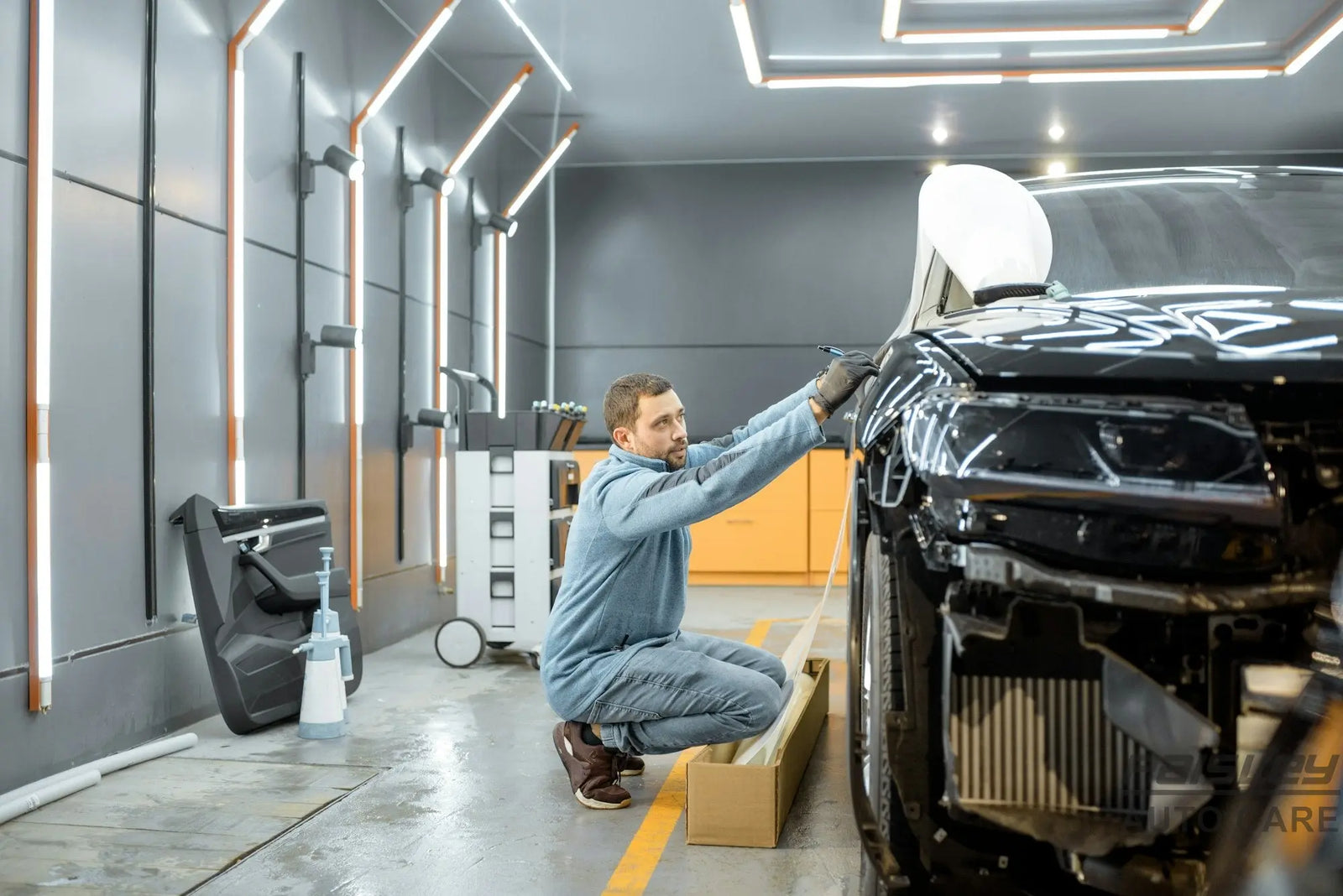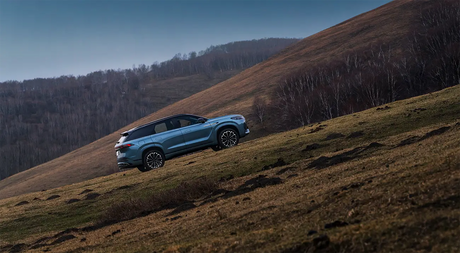Ever wondered how to keep your car's paint looking fresh off the lot for years? Enter the world of paint protection film, a true unsung hero in the battle against chips, scratches, and the sun's relentless rays. But before you dive in and wrap your ride, you're probably asking, "How long does this magic shield actually last?"
Well, you're in luck because that's exactly what we're here to explore. Paint protection film, or PPF as the cool kids call it, isn't just a temporary fix; it's a long-term investment in your vehicle's aesthetics and value. Let's peel back the layers (pun intended) and discover what makes PPF a must-have for car enthusiasts and everyday drivers alike.
What Is Paint Protection Film?
The Basics of Paint Protection Film
Paint Protection Film (PPF) serves as a powerful barrier between your car's paint and the harsh elements it faces daily. Crafted from ultra-thin thermoplastic urethane, PPF boasts the ability to heal itself when lightly scratched, thanks to its unique chemical composition. This feature, combined with its transparency, ensures that PPF shields your vehicle from various forms of damage such as chips, scratches, and the fading effects of sunlight without altering its appearance. Its durability and protective capabilities make PPF a favored choice for maintaining a car’s aesthetic value over time.
The Evolution of Paint Protection Technology
Over the years, paint protection technology has seen significant advancements, evolving from simple sealants to the sophisticated film applications available today. Initially, vehicle owners relied on waxes and sealants that offered only temporary protection and required frequent reapplication to maintain efficacy. The introduction of PPF marked a pivotal shift, providing a more durable, long-lasting solution. According to Timur Gizzatov, owner of Gleamworks, a leading provider in high-quality detailing services, today's PPF not only delivers unmatched protection against physical damages but has also improved in terms of clarity and longevity, ensuring vehicles look newer for longer..
As paint protection film technology continues to advance, its capabilities expand, making it an essential consideration for anyone looking to safeguard their vehicle's appearance and resale value. The progression from initial paint protection measures to the current state-of-the-art PPF epitomizes the industry's efforts to meet the needs of car enthusiasts and everyday drivers alike, emphasizing the importance of protecting a vehicle's exterior against the rigors of the road.

Factors Influencing Paint Protection Film Longevity
Quality of the Film
The lifespan of paint protection film (PPF) on your vehicle significantly depends on the film's quality. High-grade PPF, as recommended by Timur Gizzatov of Gleamworks, offers advanced features like improved clarity, self-healing abilities, and resistance to yellowing. These features ensure that the film not only protects your car’s paint from chips, scratches, and sun damage but also maintains its aesthetics over time. Lower quality films might not offer the same level of protection or durability, leading to a shorter lifespan and less effective protection.
The Environment's Role
Your vehicle's exposure to environmental factors plays a critical role in determining how long paint protection film lasts. Cars in harsh climates, whether it’s scorching sunlight in desert areas or salty air in coastal regions, may experience faster wear and tear on the PPF. UV rays can degrade the film over time, and salt can corrode it, both diminishing its protective qualities and lifespan. Vehicles parked outdoors regularly or in areas with high pollution levels might also see a reduced lifespan of PPF compared to those kept in more controlled environments.
Maintenance and Care
Proper maintenance and care are pivotal in extending the longevity of paint protection film. Regular cleaning to remove dirt, grime, and other contaminants can prevent the PPF from deteriorating prematurely. It's also important to follow the specific care instructions provided by the manufacturer or installation expert. Employing the right cleaning agents and techniques ensures the PPF’s self-healing properties remain effective, preventing minor scratches and swirl marks from damaging the film or the paint underneath. Avoiding harsh chemicals and high-pressure washing can further sustain the film’s condition and appearance.
In essence, the duration your paint protection film retains its effectiveness and aesthetic qualities hinges on the material's quality, the conditions it faces, and how well it's maintained. By investing in high-quality PPF, understanding the environmental impacts, and adhering to proper maintenance routines, you can maximize the protection and lasting beauty of your vehicle's paint job.

How Long Does Paint Protection Film Last?
Average Lifespan Expectations
When you're considering a paint protection film (PPF) for your car, knowing its longevity is crucial. Typically, PPF can last anywhere from five to ten years. This lifespan is made possible thanks to the high-quality materials used in today's PPF and the advanced technology that goes into its production. It's designed not only to protect your car's paint from wear and tear but also to sustain its clarity and durability over years. Timur Gizzatov, owner of Gleamworks, highlights how innovations in PPF technology contribute to these extended lifespans, ensuring your investment keeps your vehicle looking pristine for as long as possible.
Variables That Can Affect Longevity
Several factors come into play that can either lengthen or shorten the lifespan of your PPF. Understanding them can help you maximize the benefits of your paint protection film:
- Quality of the Film: Not all PPFs are created equal. Higher-quality films usually come with better warranties and are more resistant to yellowing, peeling, and cracking.
- Environmental Factors: Cars exposed to harsher climates, like extreme heat, cold, or high levels of UV radiation, may see a reduced lifespan in their PPF. Similarly, frequent exposure to acidic pollutants or road salts can affect the film's durability.
- Maintenance and Care: How you maintain your car plays a significant role in the longevity of the PPF. Regular cleaning and avoiding abrasive materials can prevent scratches or dents that might compromise the film's integrity.
- Installation Quality: A professionally applied PPF will undoubtedly last longer than a poorly done job. It's essential to choose reputable and experienced professionals for the installation to ensure it's done correctly.
By taking these factors into account, you'll have a clearer understanding of "how long does paint protection film last" and how you can influence its longevity. Proper care and awareness of the variables affecting PPF can ensure that the technology serves its purpose of protecting your vehicle's aesthetic appeal for years to come.
Signs It's Time to Replace Your Paint Protection Film
After understanding how paint protection film (PPF) serves as a durable shield for your car, maintaining its appearance and value, recognizing the right time for replacement is crucial for continued protection. Even the best PPF won't last forever, and its longevity can be impacted by several factors. Here’s how you’ll know it’s time to think about replacing your film.
Visible Wear and Tear
First and foremost, visible signs of wear and tear are clear indicators that your paint protection film is due for replacement. Over time, even high-quality PPF can show signs of aging. Watch out for scratches, dings, or tears that no longer self-heal. While PPF is designed to resist and even repair minor scratches, significant damage that compromises the film's integrity means it's time for a change. If you notice any areas where the film seems to have lifted or is peeling at the edges, this is a direct sign it’s no longer offering optimal protection. Such damage may not only look unsightly but can also allow moisture and dirt to get under the film, potentially causing damage to the paint underneath.
Changes in Texture and Color
Over time, the texture and color of the paint protection film can change, indicating it's time for a replacement. If the film starts to yellow, it's a sign that it's breaking down and won't provide the same level of protection against UV rays. This discoloration tends to be more noticeable on vehicles with lighter paint colors and is a common issue with older or lower-quality films. Moreover, if you feel roughness or notice the film isn't as smooth as it once was, this could mean that it's been compromised by contaminants or simply deteriorating due to age and exposure.
Timur Gizzatov, owner of Gleamworks, advises car owners to be vigilant about these signs. Proper maintenance can extend the life of PPF, but once these symptoms appear, it’s wise to consult a professional about replacement options to ensure your vehicle continues to enjoy unparalleled protection.
By keeping an eye out for wear, tear, texture, and color changes, you can ensure that your vehicle's paint protection film continues to serve its purpose. Knowing when to replace PPF can save you from potential paint damage and maintain your car's aesthetic appeal and value.
Extending the Life of Your Paint Protection Film
So you've got the scoop on the durability and benefits of paint protection film. Remember, its longevity isn't just about what's promised on the package it's also in your hands. Keeping an eye out for wear and tear, coupled with regular maintenance, can push your PPF's lifespan further and also ceramic coating on ppf can significantly increase lifetime of ppf. Sure, the environment and the film's quality play their parts, but so do you. Stay vigilant, care for your car, and you won't just be preserving its shine; you'll be safeguarding its value too. After all, a car that looks good on the outside feels great to drive.




